SUSE® Rancher Prime: OS Manager the visual way
|
The following instructions need Rancher 2.8.x at least. |
This quickstart will show you how to deploy the SUSE® Rancher Prime: OS Manager plugin and operator into an existing Rancher Manager instance.
Once installed, you’ll be able to provision a new SUSE® Rancher Prime: OS Manager cluster based on RKE2 or K3s.
However, if you want to install staging or dev operator, you can only do it in CLI mode.
Enable the Rancher Manager Extensions Support
In order to enable the Rancher Manager Extensions Support, you’ll need to follow the steps below:
-
Open a web browser, connect and login to your Rancher Manager instance
-
Click on the top left menu and click on
Extensions
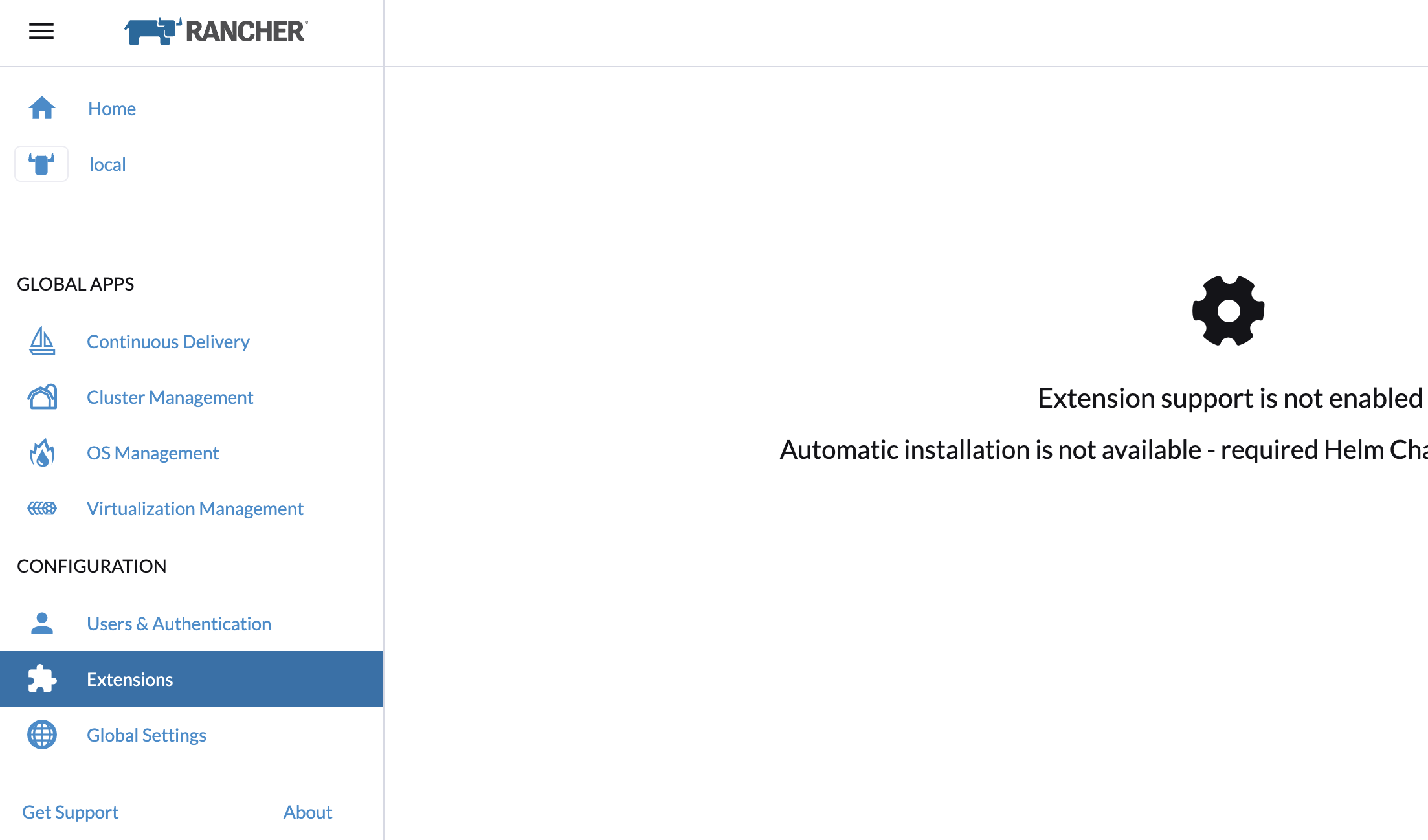
-
Click on
Enablebutton to install theExtension Operator
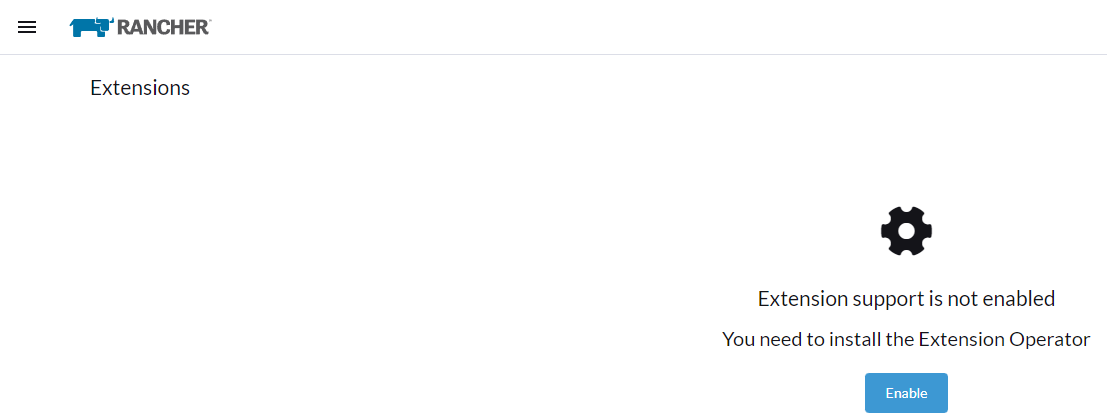
-
A popup will appear, click on the
OKbutton to continue and install the Rancher Manager Extensions repository
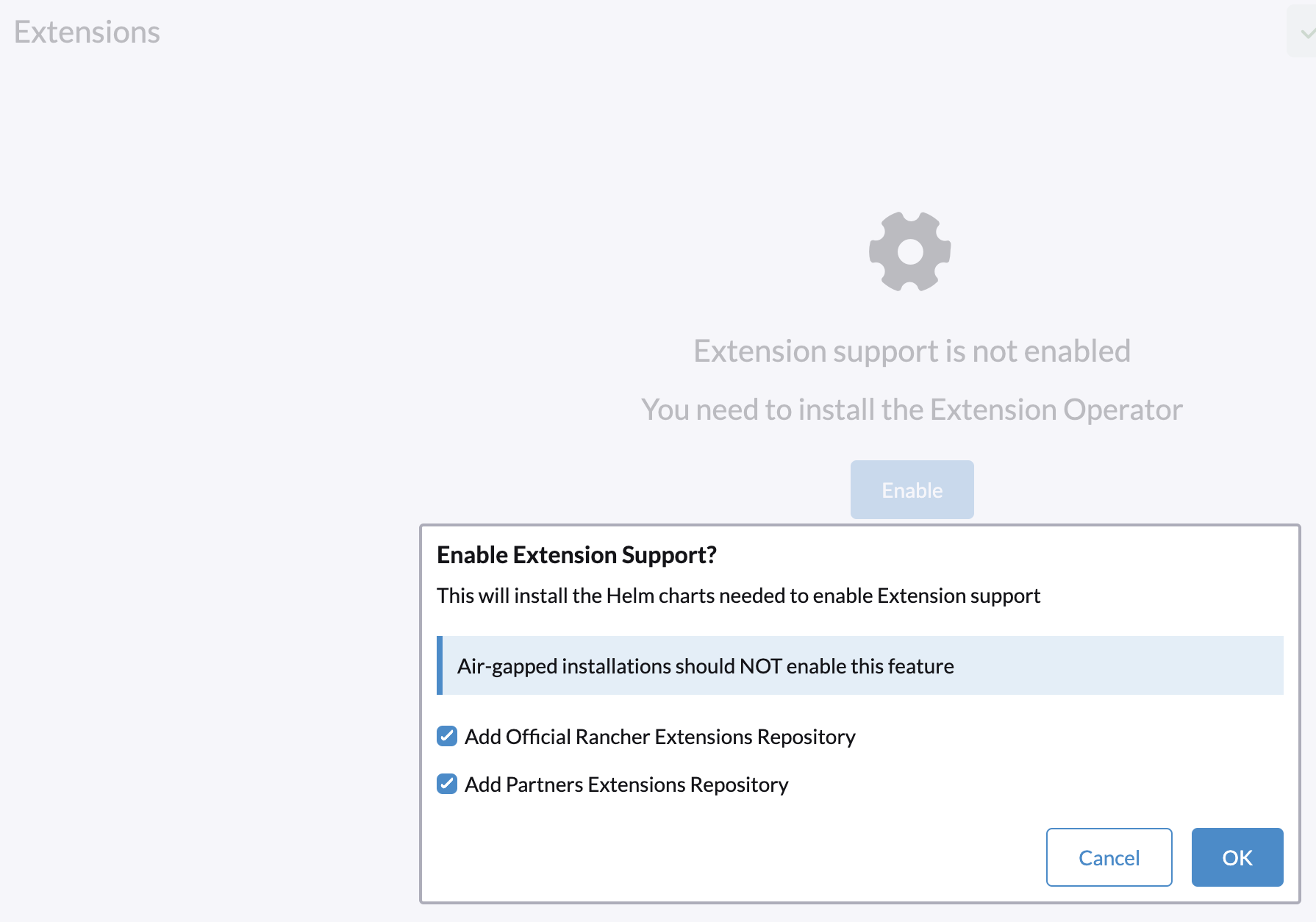
Install the elemental plugin
After the Rancher Manager Extensions Support is enabled, you can install the elemental plugin as follow:
-
Under the
Availabletab you will seeelementalplugin available
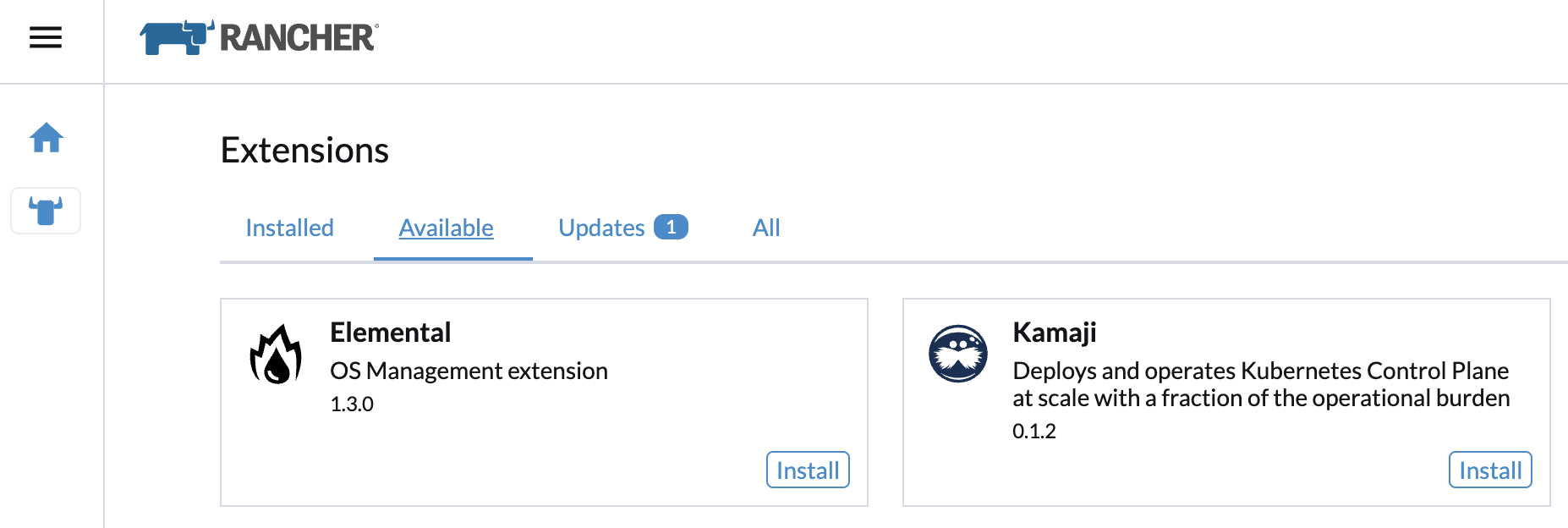
|
If the |
-
Click on the
Installbutton, a popup will appear and click onInstallagain to continue.

-
On the
Installedtab, theelementalplugin is now listed.
|
If the |
Once the elemental plugin installed, you can see the OS Management option in the Rancher Manager menu, refresh the page if you do not see it.
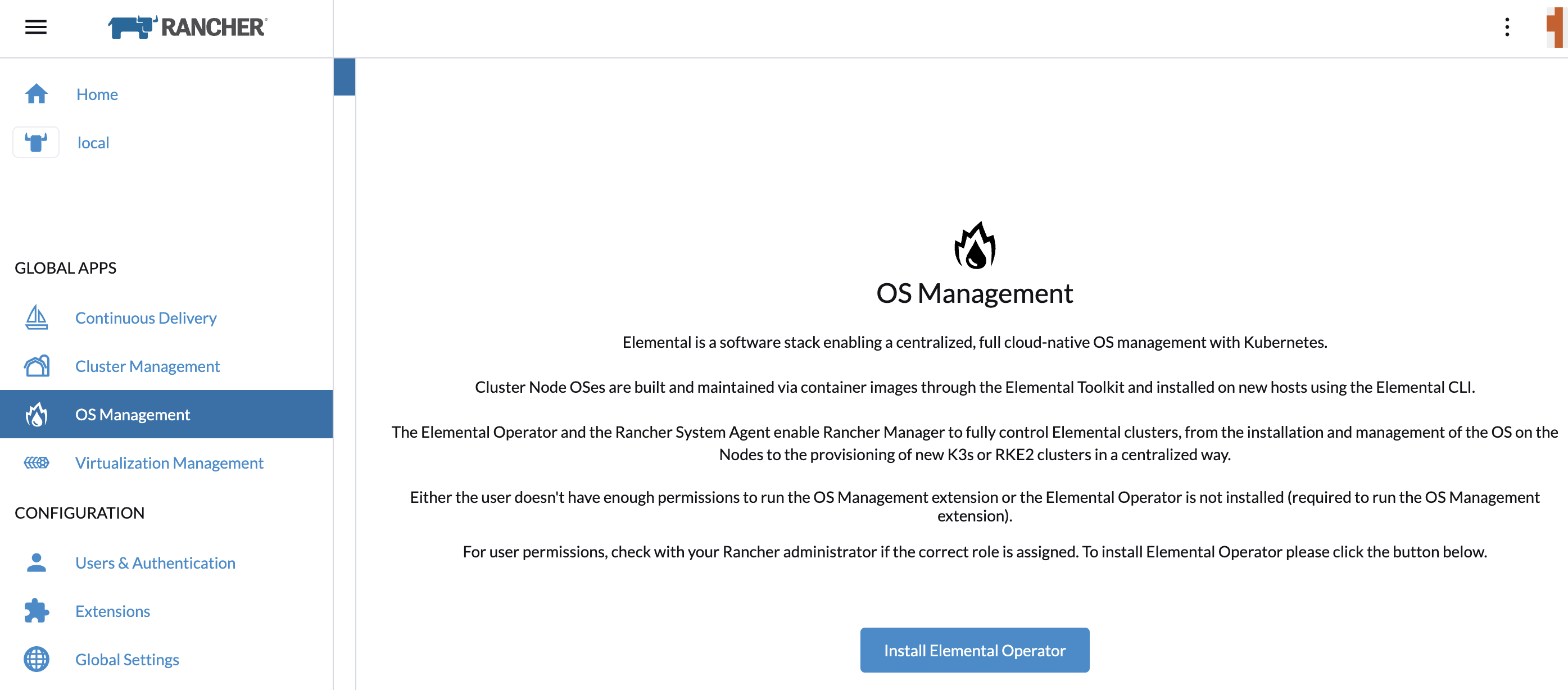
Install the elemental operator
|
The following guide will show you how to install the operator through the SUSE® Rancher Prime: OS Manager UI. But you can also install it directly from the Marketplace. |
Click on the OS Management button in the navigation menu.
If the operator is not already installed, the elemental ui will let you deploy it by clicking on the Install SUSE® Rancher Prime: OS Manager Operator button:
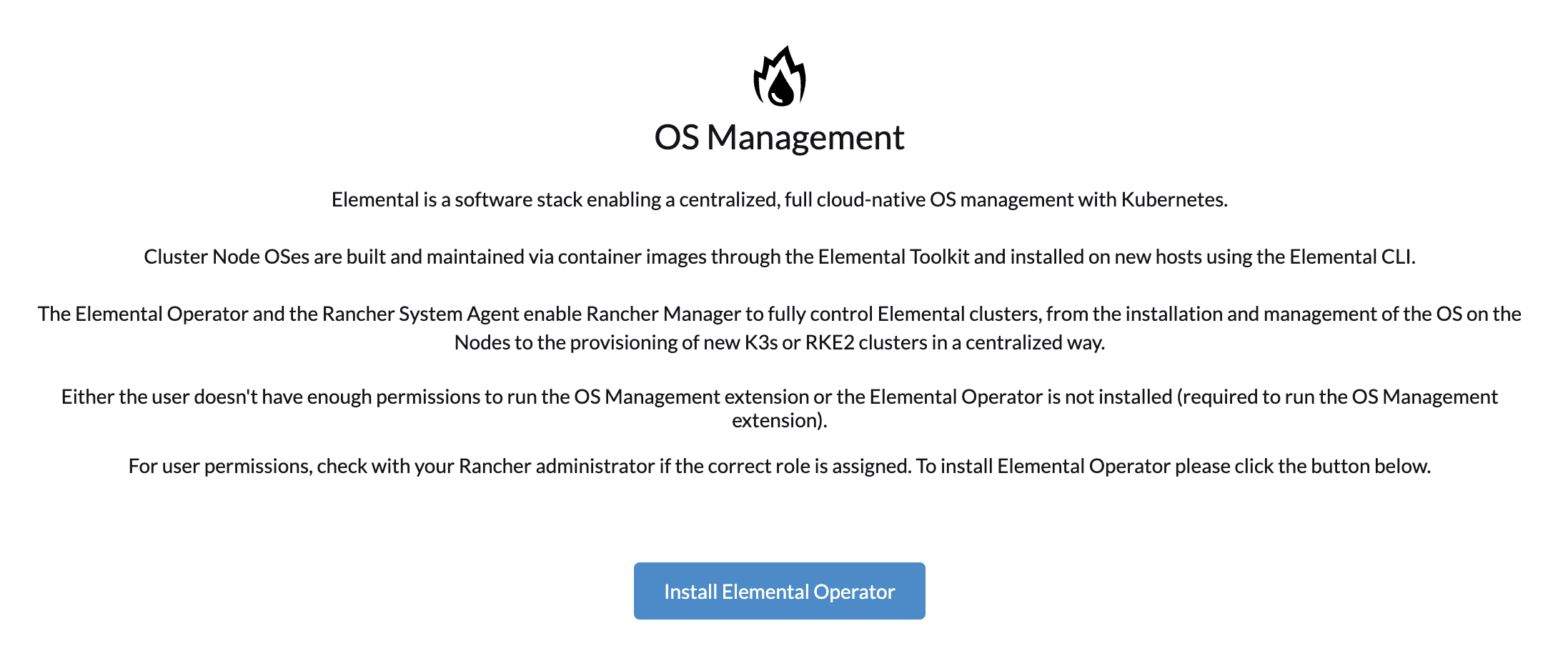
It will redirect you to the Rancher Marketplace to install the operator.
Click on the Next button:
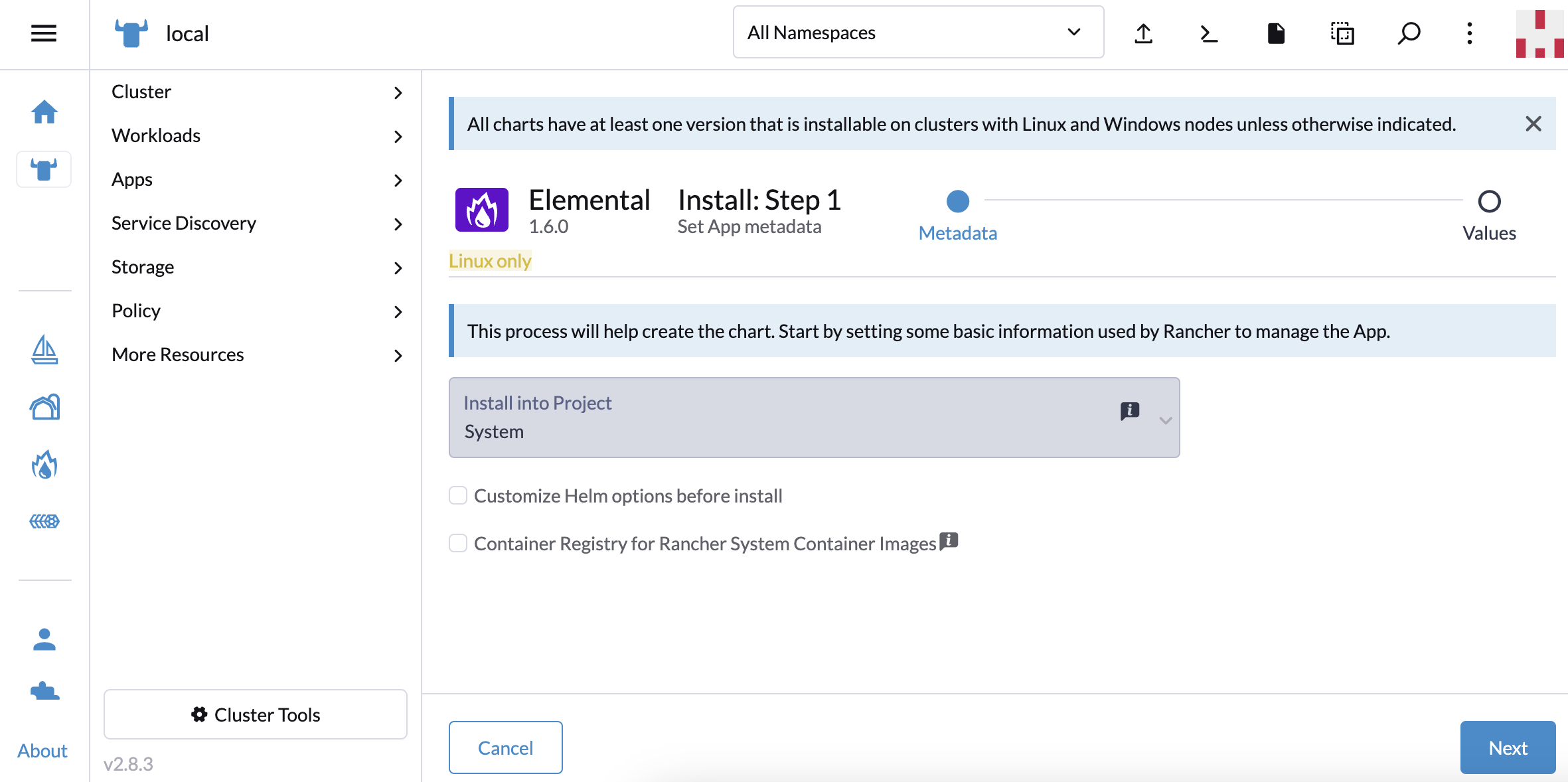
In this screen, you can customize or use the default values, click on Install to continue:

You should see elemental-operator-crdsand elemental-operator deployed in the cattle-elemental-system namespace:
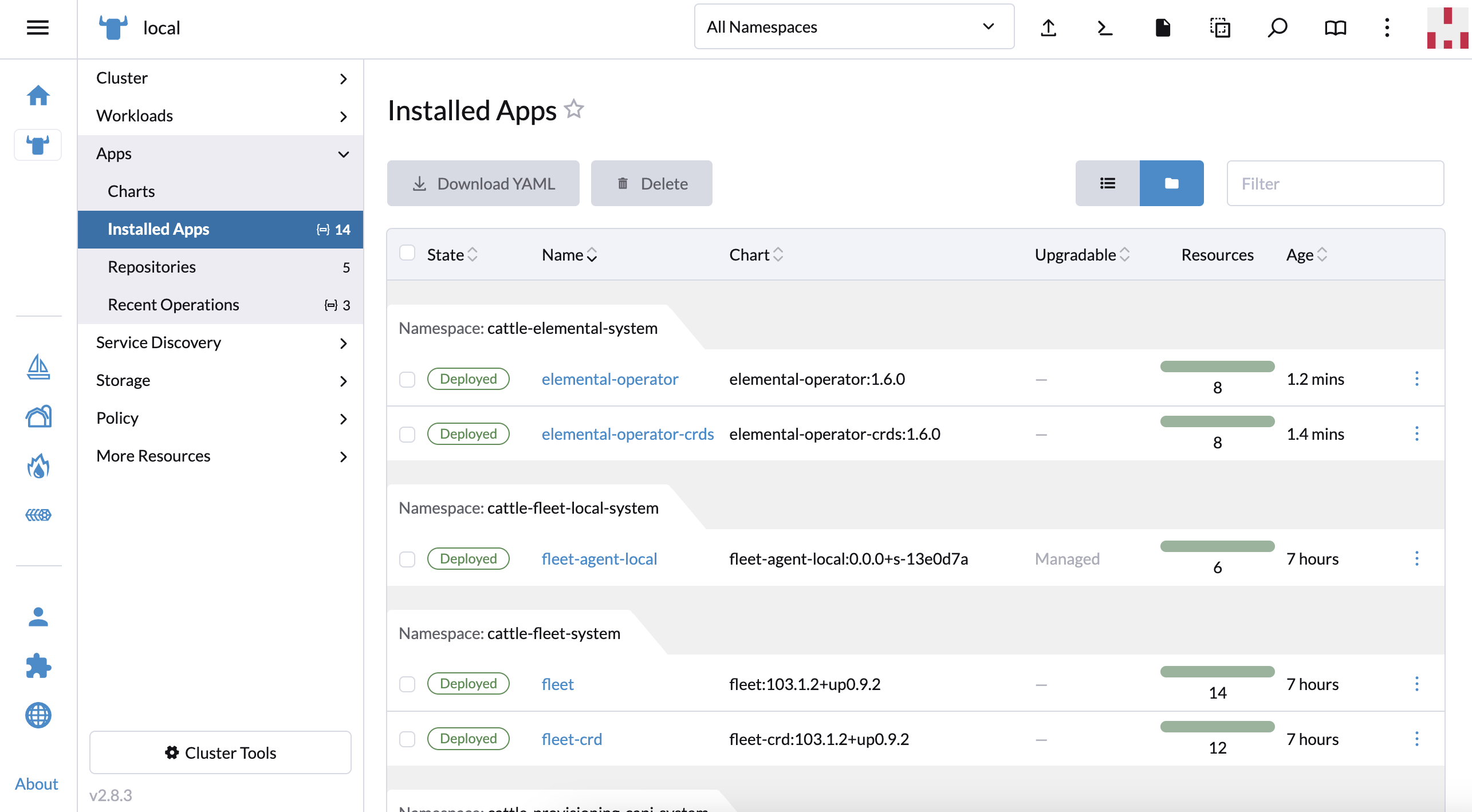
|
If you do not see them, make sure to select the correct namespace at the top of the page. |
Add a Machine Registration Endpoint
In the OS Management dashboard, click the Create Registration Endpoint button.
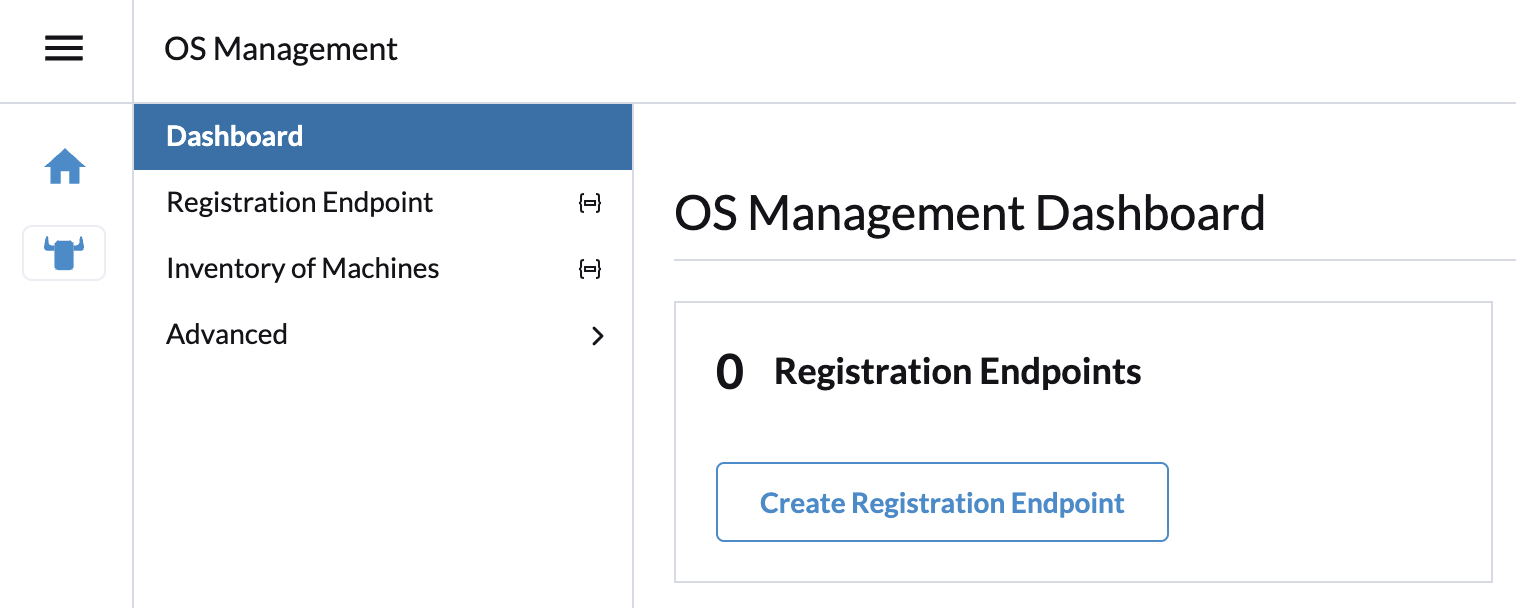
Now here either you can enter each detail in its respective places or you can edit this as YAML and create the endpoint in one go. Here we’ll edit every fields.

|
Main options
|
Once you create the machine registration end point it should show up as active.
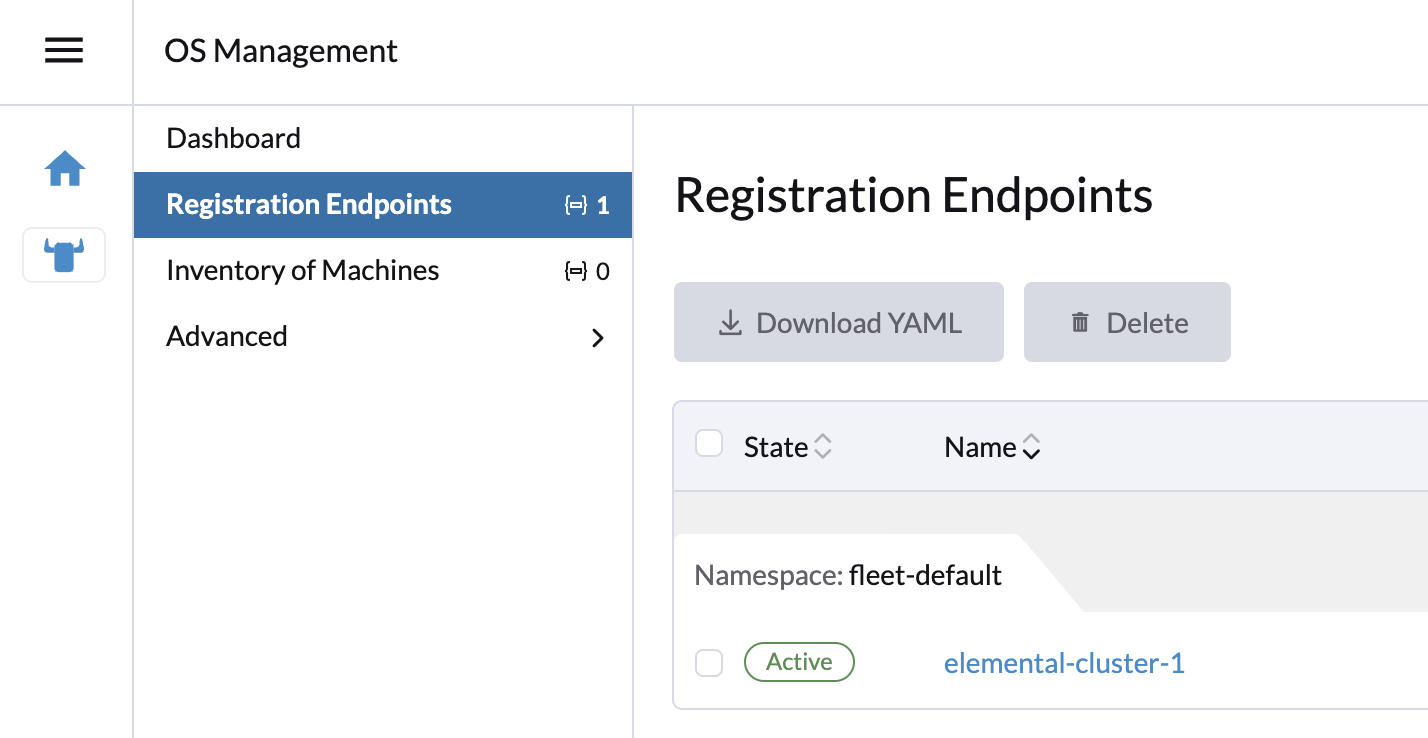
Preparing the installation (seed) image
Now this is the last step, you need to prepare a seed image that includes the initial registration config, so it can be auto registered, installed and fully deployed as part of your cluster. The contents of the file are nothing more than the registration URL that the node needs to register and the proper server certificate, so it can connect securely.
This seed image can then be used to provision an infinite number of machines.
The seed image is created as a Kubernetes resource above and can be built using the Build Media button, but first, you have to select ISO or RAW image.
In opposite to ISO where it needs two devices (device with ISO and another disk where to install SUSE® Rancher Prime: OS Manager), RAW image allows to boot from a single device and directly install the operating system in the device. RAW image only contains a boot and a recovery partition and it boots first into recovery mode to install SUSE® Rancher Prime: OS Manager (for information, the process is similar to the reset one).
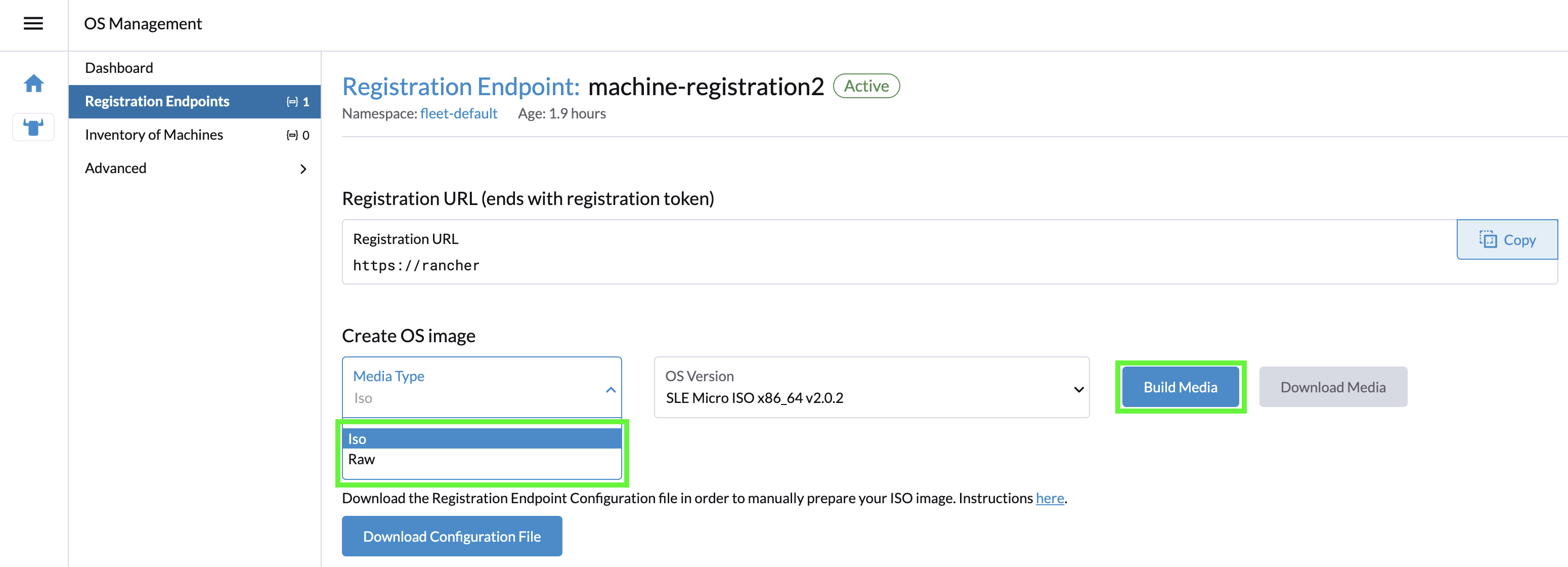
Once the build is done, media can be downloaded using the Download Media button:
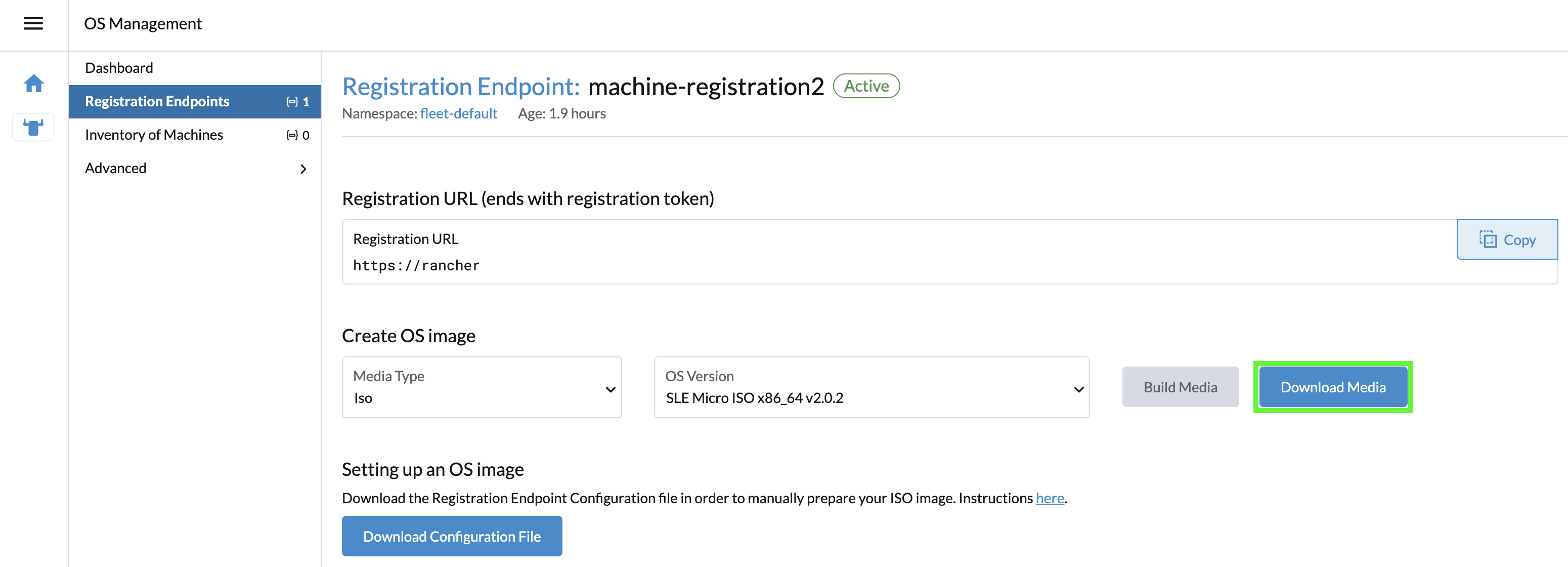
You can now boot your nodes with this image and they will:
-
Register with the registrationURL given and create a per-machine
MachineInventory -
Install SLE Micro to the given device
-
Reboot
Machine Inventory
When nodes are booting up for the first time, they connect to Rancher Manager and a Machine Inventory is created for each node.

Custom columns are based on Machine Inventory Labels which you can add when you create your Machine Registration Endpoint:
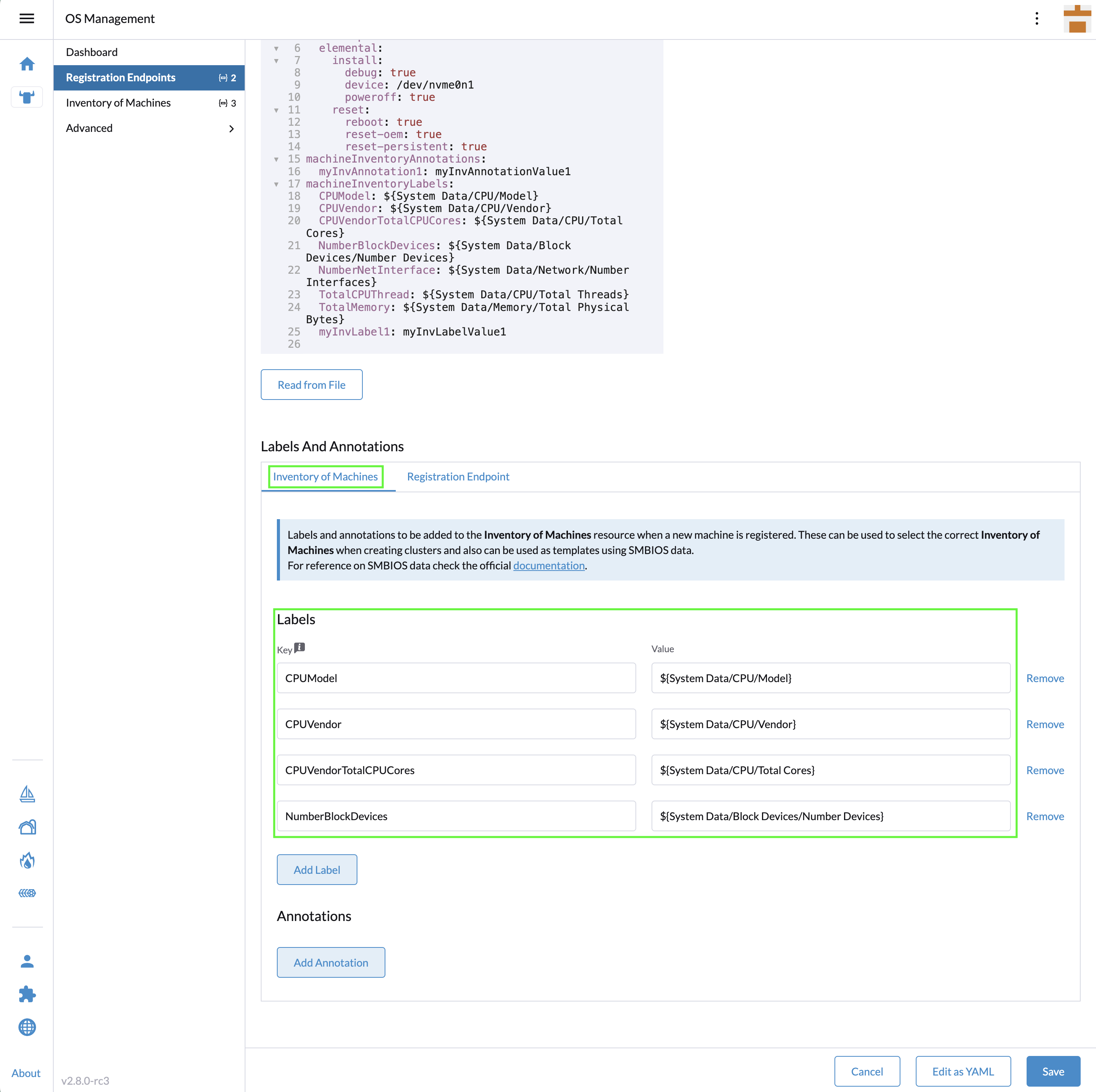
On the following screenshot, Hardware Labels are used as custom columns:
You can also add custom columns by clicking on the three dots menu.

Finally, you can also filter your Machine Inventory using those labels.
For instance if you only want to see your AMD machines, you can filter on CPUModel like below:

Create your first SUSE® Rancher Prime: OS Manager Cluster
Now let’s use those Machine Inventory to create a cluster by clicking on Create SUSE® Rancher Prime: OS Manager Cluster :
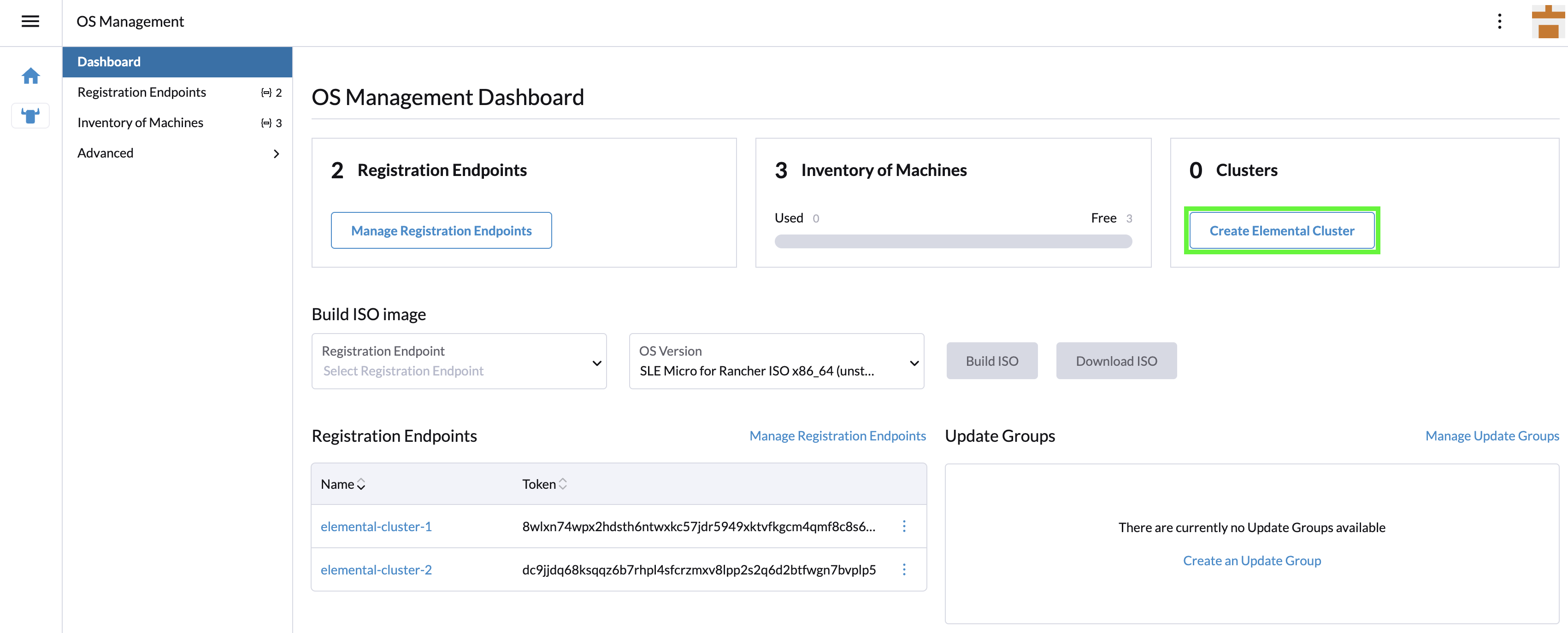
For your SUSE® Rancher Prime: OS Manager cluster, you can either choose K3s or RKE2 for Kubernetes.
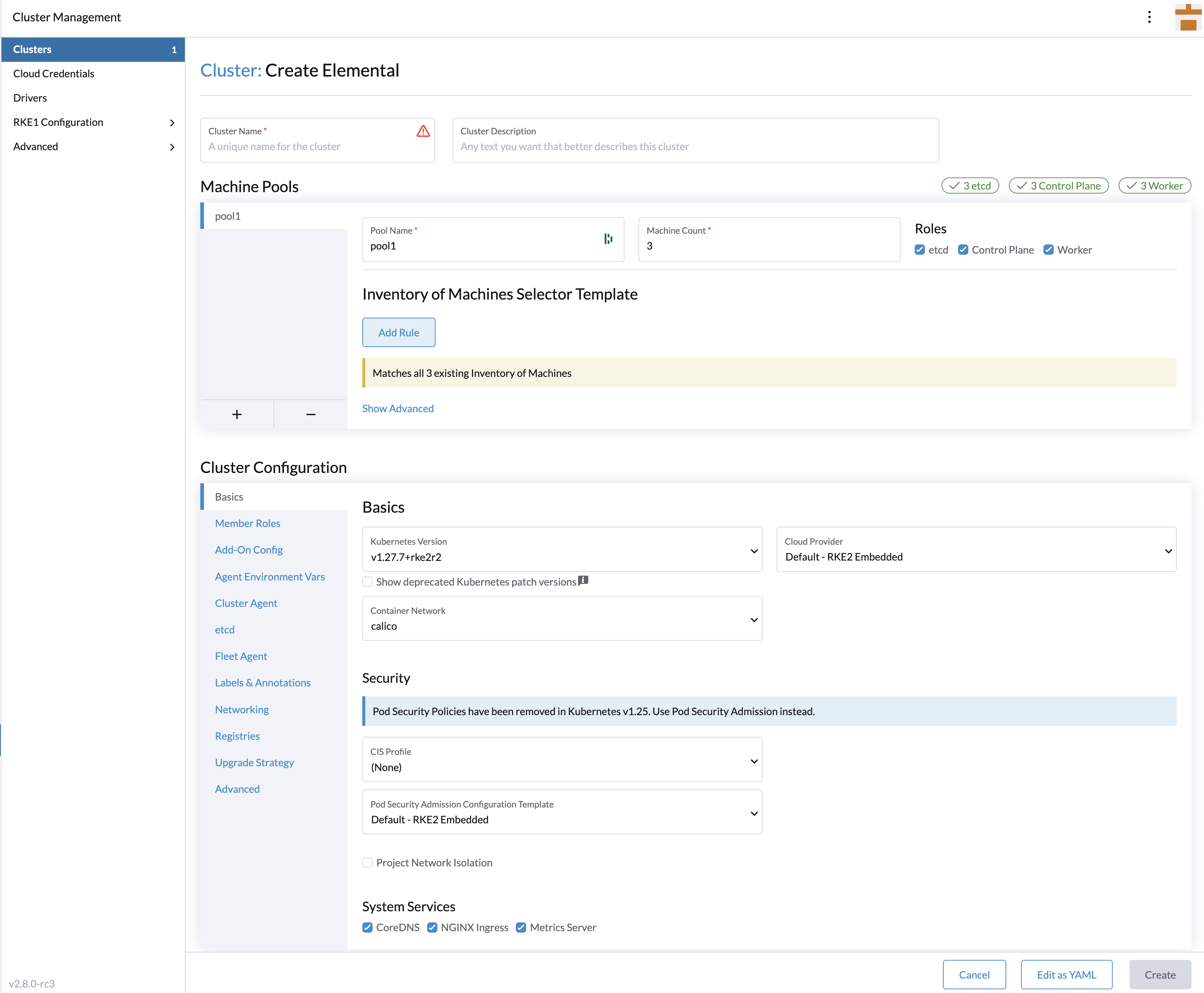
Most of the options are coming from Rancher, that’s why we will not detail all the possibilities. Feel free to check the Rancher Manager K3s distribution configuration documentation or the Rancher Manager RKE2 distribution configuration documentation if you want to know more.
However, it is important to highlight the Inventory of Machines Selector Template section.
It lets you choose which Machine Inventory you want to use to create your SUSE® Rancher Prime: OS Manager cluster using the previously defined Machine Inventory Labels :

As our three Machine Inventories contain the label CPUVendor with the key AuthenticAMD, the three machines will be used to create the SUSE® Rancher Prime: OS Manager cluster.